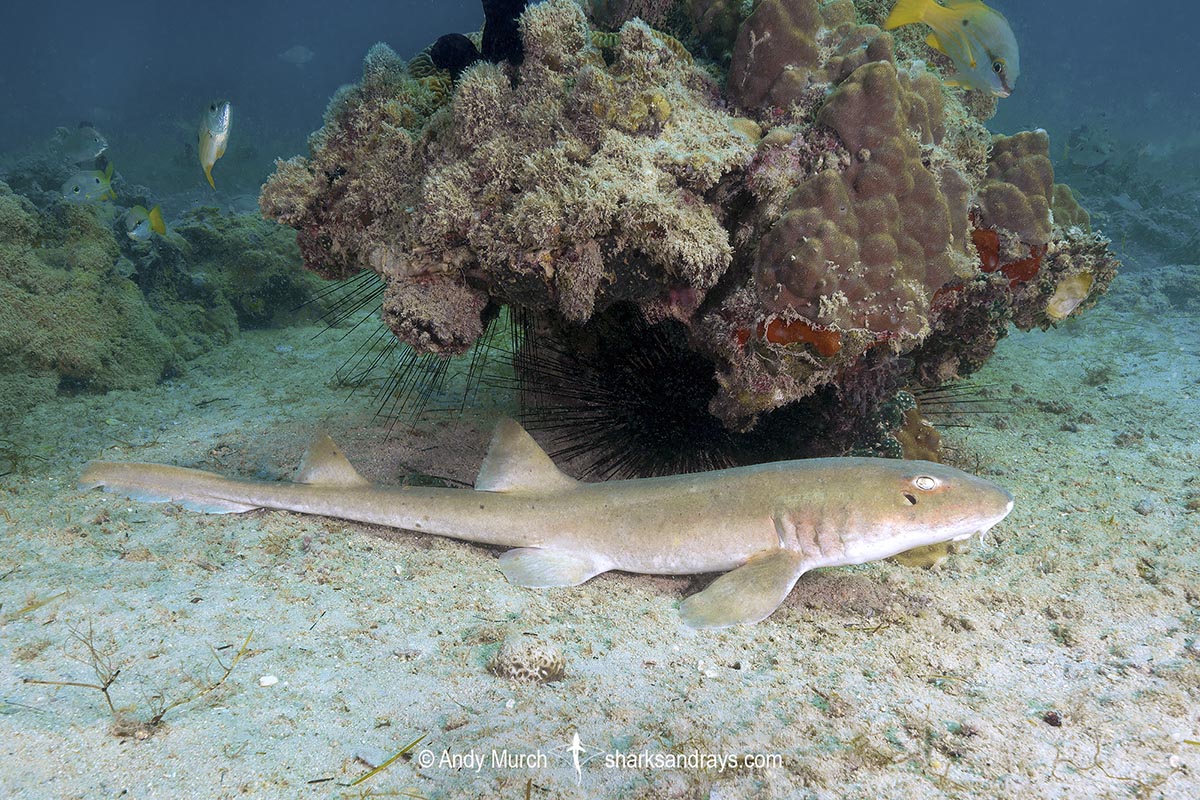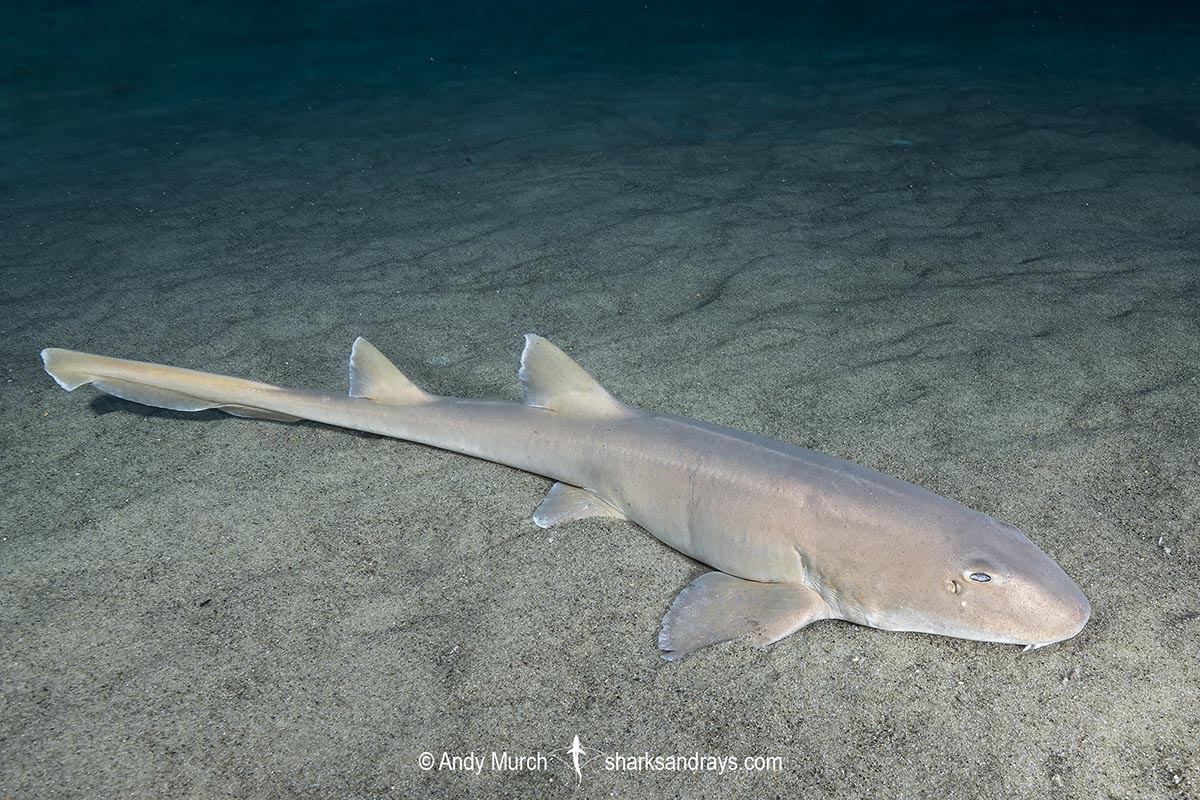Common names
Arabian Carpetshark, Arabian Bamboo Shark.
Binomial
Chiliscyllium arabicum.
Synonyms
Chiloscyllium confusum.
Identification
Head broad. Snout short and bluntly rounded. Long nasal barbells. Spiracle slightly smaller than, and positioned below and slightly behind eye. Short gill slits. Well defined lateral groove on each flank running from behind head to base of tail. Dorsal fins have straight or mildly convex posterior margins. First dorsal origin over midpoint of pectoral fin base. Second dorsal almost as large as first. Anal fin low and rounded; positioned directly before lower caudal lobe. Caudal fin long and thin, with long, low, rounded lobes.
Dorsal coloration tan or brown. Usually unmarked but older animals may have a few scattered small dark or pale spots on head, torso and fins.
Size
Maximum size 80cm. Size at birth less than 10cm.

Conservation Status
NEAR THREATENED
The Arabian carpetshark is a bycatch in trawl and stake net fisheries, but it has a low market value and is usually discarded at sea. It is assumed to have a fairly high post-release survival rate.
A study of the Kuwaiti shrimp fishery conducted in the 1980s showed that carpet sharks comprised 14% of overall bycatch. As the Arabian carpetshark is known to associate with coral reefs, his implies the fishery is likely destroyed important coral habitat.
Habitat decline is probably the largest challenge facing this species. In the Gulf, climate change has caused coral reef bleaching. There have also been changed cause by the damming of the Tigris-Euphrates river system in Turkey and the drainage of the Iraqi marshes, plus war-related oil spills, and rapid large-scale coastal development sometimes involving coastal land reclamation. Overall, coastal reefs and other habitat have been heavily impacted, eg. the almost total loss of mangrove areas around Bahrain.
High levels of polycyclic aromatic hydrocarbons (PAHs) and benzo [a] pyrene reported from this species from Kuwait (Al-Hassan et al. 2000).
In India, general declines in carpetsharks are increasing due to more intensive fishing pressure linked to population growth.
Arabian carpetsharks are also collected for the aquarium trade.

Habitat
Tropical coral reefs, reef rubble patches, rocky shorelines and mangrove flats. From 2-100m.
Distribution
The Arabian carpetshark inhabits the northwest Indian Ocean. It is found in the Persian/Arabian Gulf, along the coastlines of Iran and Pakistan, to the southern tip of India.
Exact limits of its range are unclear due to confusion with the grey bamboo shark H. griseum.
Reproduction
Oviparous. A single egg case develops in each uterus.
Diet
Feeds on squid, shelled mollusks, crustaceans and snake eels.
Behavior
Nocturnal. Rests by day in crevices on the reef or under corals.
Reaction to divers
Reasonably easy to approach with slow casual movements. Will bolt if molested.
Diving logistics
Arabian bamboo sharks are regularly seen by divers in the UAE. There is a resident population on the shallow reefs adjacent to Abu Dhabi.
Contact http://www.divemahara.com for more info.






